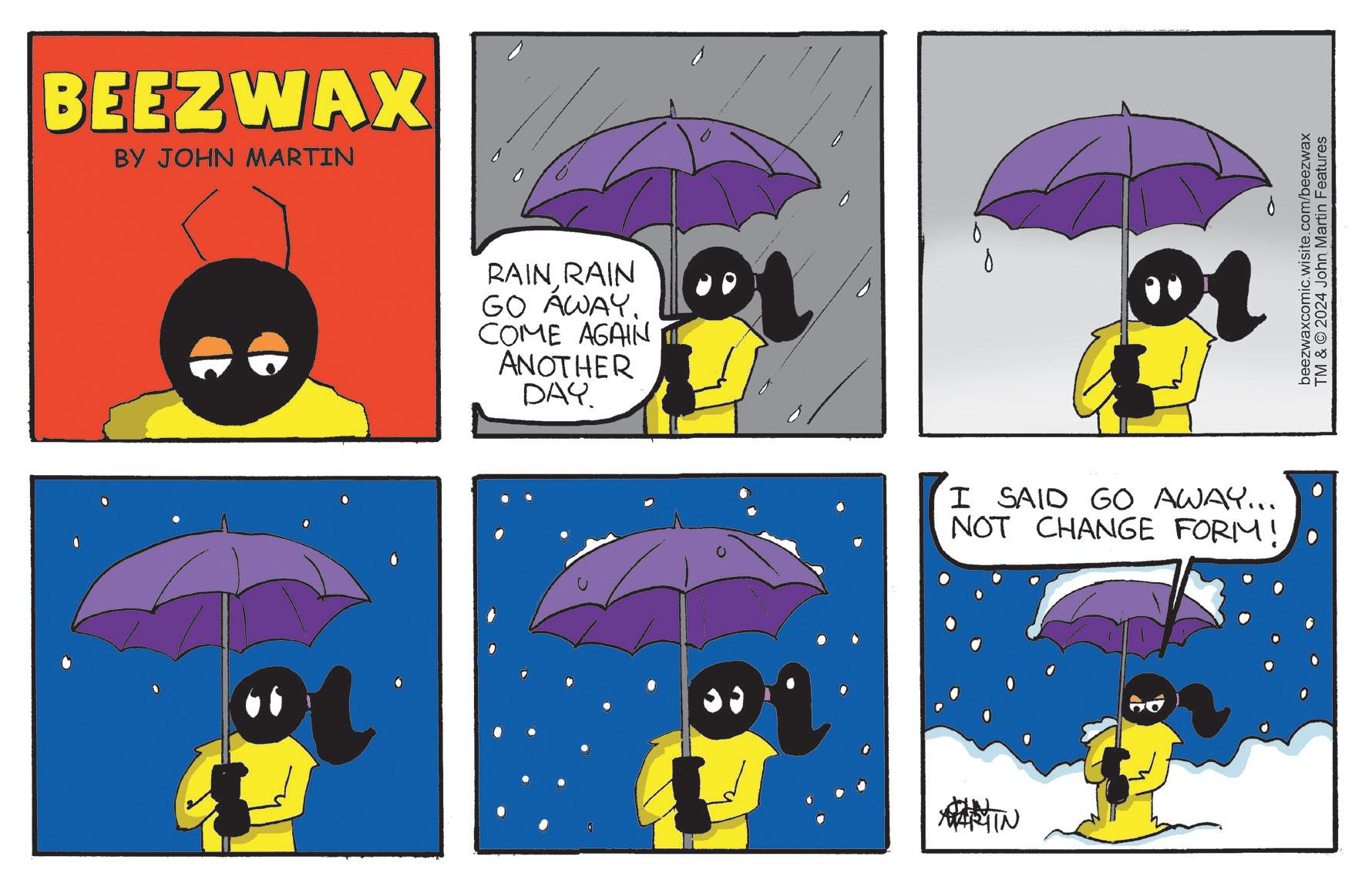









field in connection with the Palisades Fire.
By John Welborne
In the Theater of the vast Park La Brea complex situated south of The Grove and north of the museums of Hancock Park, members of the Park La Brea Residents Association (PLBRA) gathered for their annual meeting on Sun., Jan. 12.
President Robert Shore presided, and legal counsel Bruce J. Altshuler spent much of the early part of the meeting advising attendees on voting guidelines for the board of directors election and answering general questions. Several days after the meeting, the election results were announced, with 11 candidates elected.
By Suzan Filipek
The Miracle Mile Residential Association (MMRA) will hold its annual community meeting on Sat., Jan. 25 from 10 a.m. to 11:30 a.m. at the Petersen Automotive Museum, 744 S. Fairfax Ave.
Due to the recent wildfires, the agenda for the upcoming meeting has changed.
“We’ve decided to refocus, in light of the critical fire disaster, to highlight what we’re calling ‘neighborhood
resilience,’” MMRA President Greg Goldin told us.
“We plan to talk about ways for neighbors to get to know one another more closely, to learn skills to keep each other safe in emergencies and, more widely, to keep an eye out for each other.”
All neighbors within the Miracle Mile are welcome to bring their input and questions pertinent to the neighborhood and to become members of MMRA for an annual fee of $25.
The main feature of the meeting was a question and answer session with the Los Angeles City Council Fifth District representative.
Because Councilwoman Katy Yaroslavsky was in the field in connection with the Palisades Fire evacuations (that include parts of her district), she was unable to attend, but her communications director, Leo Daube, made remarks and responded to many questions. Additional information about the annual meeting, as well as future meetings, is on the association’s website at: plbra. org/meetings.
By Nona Sue Friedman
Local residents seeking to build a new neighborhood organization invite interested people to join them at an al fresco breakfast, from 9 a.m. to noon, on Sun., Feb 2. The event will take place in the parking lot behind Hancock Homes at 501 N. Larchmont Blvd. (on the northwest corner at Rosewood).
The purpose of the new group, named Larchmont United Neighborhood Association (LUNA) is to advocate for the Larchmont
Village area between Arden and Wilton, from Beverly to Melrose.
The founding president of LUNA is Sam Uretsky, and Annie O’Rourke and Keith Johnson are joining him on the LUNA board. At the Sunday breakfast, the founders hope to recruit additional members, at annual dues of $25 per household.
As Uretsky told the Larchmont Chronicle , “We are passionate and excited to help Larchmont grow with a positive perspective.”
By John Welborne
The centennial of local Third Street Elementary School was celebrated again on cam-
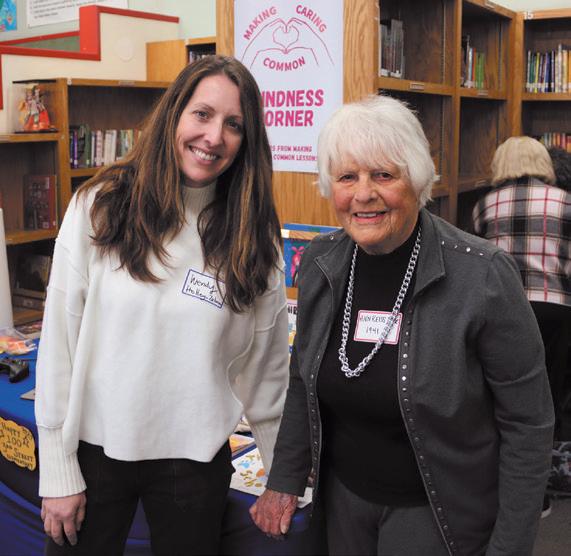
pus on Jan. 17. Classmates from the 1940s through 2020s reconnected at a lovely brunch hosted by Friends of Third in the school’s library.
Centennial historian Wendy Holley-Zelman welcomed attendees, and this writer’s Class of 1959 was represented by about a half-dozen alums.
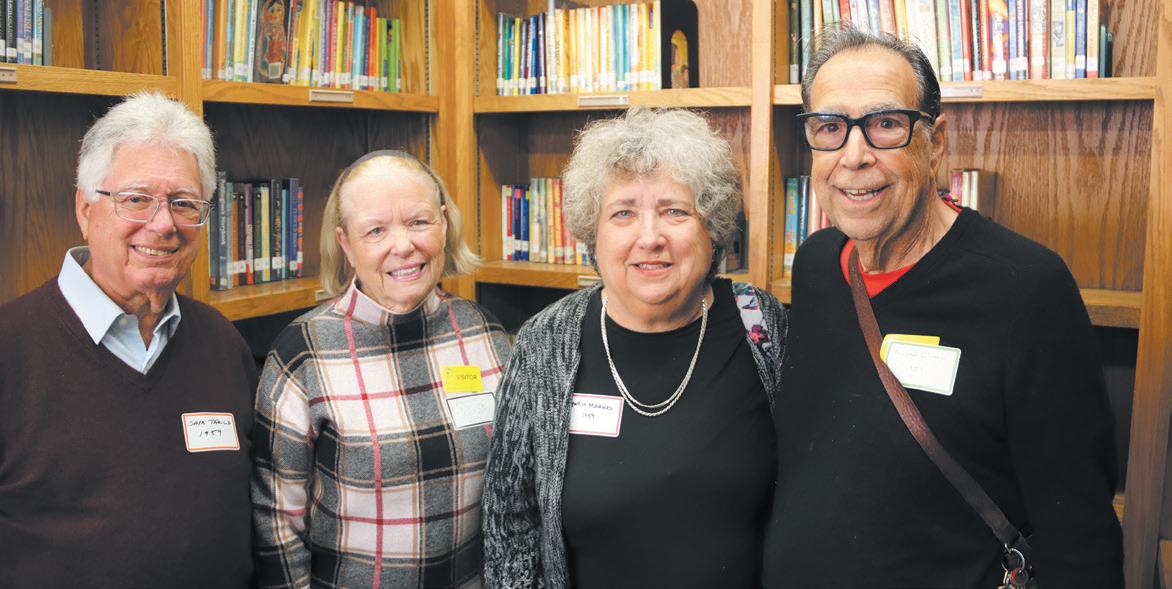

As Los Angeles comes to grips with the losses, in lives, property and communities that were consumed in the catastrophic fires that broke out the second week of this year, it seems that few areas of our civic life have been left untouched by this terrible tragedy. This includes architectural heritage. At the time of writing, with the fires still raging, over 40 architecturally and culturally significant structures have been lost. A comprehensive list is being compiled by the Los Angeles Conservancy.
As we have seen with world-famous sites such as the Cathedral of Notre Dame, Windsor Castle and many others — outside of war — fire is one of the most destructive foes of built heritage. Closer to home, Hollywood’s Sunset Fire on the evening of Jan. 8, which engulfed Runyon Canyon, hovered above one of the most concentrated centers of historic buildings in the city, threatening the Wattles Mansion, Yamashiro, The Magic Castle and the historic districts of Hollywood Heights and Whitley Heights. Extinguished before a single home was burned, the Los Angeles Fire Department (LAFD) scored its first victory against the fires.
It is the Palisades and Eaton fires that have been the sources of the most destruction. News from the Palisades soon revealed that Will Rogers’ historic ranch house in Will Rogers State Park was lost, along with its connections to Hollywood’s Golden Age. Lost nearby was Camp Josepho, which had hosted Scouting groups and activities for 84 years. Modern masterpieces such as Richard Neutra’s Freedman House, 1948; the Robert Bridges’ House, 1974; and Ray Kappe’s Keeler House, 1991, as well as the mid-century Corpus Christi Catholic Church, were burned. As of press time, the Charles and Ray Eames House, 1949, mi-
by Brian Curran

raculously survived. Along with thousands of houses, the Palisades lost its village center, including its historic Palisades Business Block, Theatre Palisades’ Pierson Playhouse and the 1929 Mortensen House, which was among the earliest homes in the community. While the Getty Villa managed to escape the destruction, much of the Pacific Coast Highway’s historic roadside architecture and eateries was lost. This included Cholada Thai, the Malibu Feed Bin, Moonshadows, the Reel Inn and the Topanga Ranch Motel, among many others.
To our east, the historic series of communities in the San Gabriel Valley — Altadena, Pasadena and Sierra Madre — bore the brunt of the catastrophic Eaton Fire that caused incalculable losses of residential neighborhoods and buildings, many well over 100 years old. Gilded Age landmarks such as the Frederick Roehrig-designed Queen Anne-style Andrew McNally Estate, 1887, and the Myron Hunt and Elmer Greydesigned Zane Grey Estate, 1907, were both destroyed. Planned communities and developments such as the 1920s English-style Janes Village, and Gregory Ain and Garrett Eckbo’s 1948 postwar Modernist development, the Park Planned Houses, both suffered heavy losses. Houses of worship and religious sites were not spared, with the Altadena Community Church, St. Mark’s Episcopal Church, the Al Taqwa Mosque, the Pasadena Jewish Temple and the Theosophical Library all lost. Quirky and nature-related sites such as the beloved Bun-
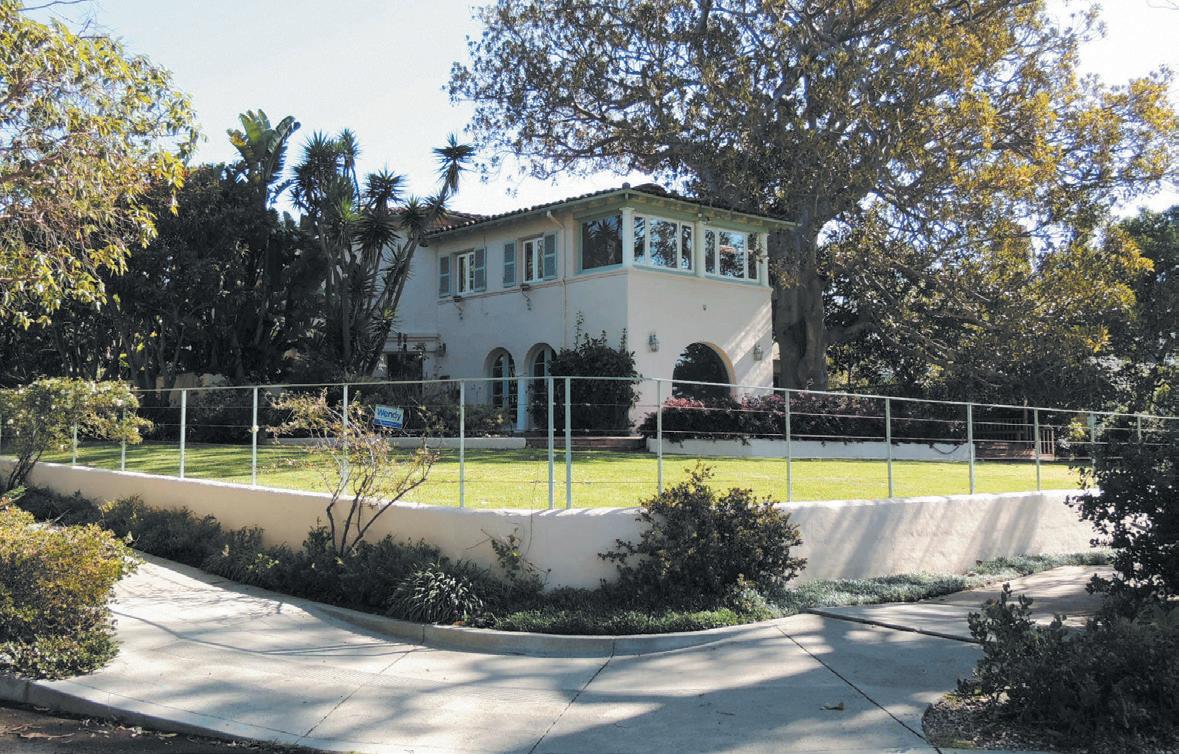
ny Museum, the 1946 artists’ colony Zorthian Ranch, the 1934 Works Progress Administration (WPA)-era William D. Davies Memorial Building in Farnsworth Park and the
1912 Walter Valentine Cottage in Wildwood Park were consumed in the blazes.
Each of these historic structures listed, along with the multitude of houses, schools,
cafés, stores and gathering places lost, add up to places of memory, of identity and of connections to the past that underpin a community’s sense of place. Their loss is incalculable, and in most cases permanent. These places are changed forever, scarred. History has shown us though, that out of great destruction can come great renewal and fresh creativity. If California’s history of destruction and revival is any guide, these devastated communities will be rebuilt and be beautiful again, in some cases better. A few of these landmarks may even rise, phoenixlike, from the ashes. But today, we mourn what we lost in the fires, because today, it is now all in the past.


(Continued from Page 13 of Section 1)
By Maya Johnson 5th Grade
By Emory Tom Kirkwood and Xavi Mason 3rd Grade
By Allison Pak 11th Grade

Greetings from Third Street Elementary! The victims of the Palisades and Eaton fires weigh heavily on our minds. Our own Coach Matthew, from JMG Sports After School Program, has lost his home. If you would like to help Coach Matthew please donate to his Go Fund Me account at gofund.me/cf11a62b.
On a lighter note, our school has multiple events planned in the coming weeks. Third Street’s See’s Candy Fundraiser will run Jan. 21 through Jan. 31. This Valentine’s Day fundraiser will help raise money for both teachers and students.
Our 5th graders are preparing to leave for Astro Camp, which is an overnight science-based educational camp.
The Read Around the World Book Challenge is still going strong! Students have taken on the challenge to read about people and places from all seven continents.
Parents will have a night of fun during our annual Parents Casino Night Fundraiser Event, which is scheduled to take place on Feb. 21. The event includes an online auction and will be a time for parents to have an enjoyable evening while also supporting our school.

Good morning, Los Angeles! February has come!! We’re here to be kind, give cards and celebrate Presidents’ Day.
For Presidents’ Day, teachers’ classes are doing activities such as read-alouds related to the holiday and learning about past presidencies heartily.
Speaking of hearts, our school has a tradition called Kindness Month, where every day we have a challenge to be kind. Domi Miyamoto, the assistant principal, said, “Typically during Kindness Month, students come up with the challenges. Everyone attempting any challenge adds to the pleasantness of the month, and those who complete all (or almost all) of the challenges receive an extra something too!”
For Valentine’s Day, Ms. Amanda, our school’s reading specialist, has a tradition of having Kindness Spies who go around school looking for students who are being kind.
Speaking of kindness, we’re signing off to give Valentine’s cards while hoping that any people affected by the fires are on the road to recovery.
P.S. Thank you LCS staff for keeping us safe from the fires. We highly appreciate it.

Our hearts go out to everyone who has been affected by the recent fires, especially those who lost their homes, businesses and schools. The City of Los Angeles is strong and we will
By Aydin Hammoudeh 8th Grade
rebuild. Semester One is coming to an end, which means that people will be wrapping up their final work. Near the end of the semester there will be the traditional snow trip that happens every end of January. All high school students are going to Big Bear, where we will be staying for three days and two nights. We are free to bring our own gear, but those who don’t own
would like to thank all our first responders for the tremendous work they’ve done to help.
any will be able to get rentals.
The class of 2025 has recently received early dedication college admissions to Cornell, Tulane and other colleges. It is admissions season and open houses were well attended. Many families are interested in Pilgrim School’s programs, offerings and our beautiful historic landmark. For more information, please contact admissions@pilgrim-school.org
the communities and for everyone who has been impacted.

As we were ready to embrace the new year, our community was affected by devastating fires. Our heart goes out to those most touched by this tragic event. Unfortunately, our school lost one of its campuses, the Pacific Palisades Campus. Many of us and our loved ones have been evacuated and sadly, lost our homes.
To provide a sense of normalcy, our four other campuses, located in the West Los Angeles area, remained open during this stressful and difficult time. The school worked to give students a safe and supportive environment, and for many of us, it is the last stable space in our current lives.
Our Pacific Palisades students have all been welcomed to the Le Lycée Century City campus in newly arranged classrooms, just for them. Our parent community stood strong to help provide housing, transportation and clothing to those affected by the fires. We

CAMPBELL HALL
Claire “Cal” Lesher 12th Grade
Happy New Year! Welcome to 2025! Unfortunately, the year started off with the disastrous wild fires in Los Angeles. We are deeply appreciative, and we feel immense gratitude beyond words for the first responders and firefighters for their bravery and heroism in battling and continuing to combat the numerous fires. We pray for all
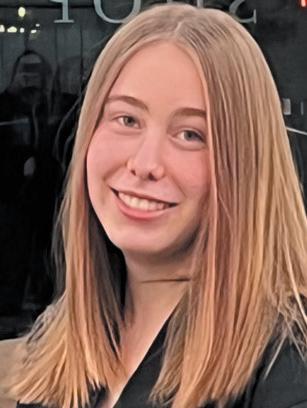
One of the many reasons I love our school community is that we step up and take action. Campbell Hall immediately began asking for donations for our disaster relief supply drive for all essentials. Our school came together and filled our gymnasium with the donations. In a few days, with the help of volunteers, we were able to distribute the goods to people affected by the devastating fires. Additionally, we started a CH Community Relief Fund for people who are experiencing need and loss related to the Los Angeles fires. Our thoughts and prayers are with everyone. May everyone remain safe.


By Helene Seifer
Mention the month of February and most people think of Valentine’s Day or possibly Presidents’ Day but, for art lovers, the month marks art week in Los Angeles. In February, two important exhibitions are again celebrating art and artists from local, national and international galleries: the sixth iteration of Frieze Los Angeles and the 30th edition of the LA Art Show. In addition, attendees of the seventh Felix Art Fair will again converge on the Hollywood Roosevelt Hotel and an upstart art fair in an abandoned post office is joining the scene.
Vibrancy of Los Angeles at Frieze Frieze Los Angeles 2025 showcases the important contributions of Los Angeles to the art world. Christine Messineo, director
of Americas at Frieze, states, “As a major art center, Los Angeles plays an influential role in the global art scene. This year we will bring together a stellar roster of galleries and artists that reflect the vibrancy and diversity of Los Angeles and beyond.”
More than 100 galleries from more than 20 countries are exhibiting, and nearly half of all participating galleries are based in Los Angeles or have spaces here in addition to other international locations, including David Zwirner, Hauser & Wirth, Blum and Small Fires Everywhere. A Focus section introduces emerging artists and galleries onto the international stage, such as Los Angeles gallery artists Sawaka Goda from Nonaka-Hill and Brandon Landers from Carlyle Packer Gallery. Outside the confines of the exhibition

pavilion — designed by Kulapat Yantrasast’s architecture firm wHY — a site-specific free public program explores Los Angeles’ cultural identity.
Diversity is our strength at LA Art Show
The LA Art Show will mark its 30th year with over 100 galleries and 16 museums and arts organizations representing diverse perspectives from around the globe. “Art is most impactful when it transcends borders,” notes the art fair’s director and producer Kassandra Voyagis. “Diversity is our strength.”
The Art Show’s 8-year-old non-commercial platform, DIVERSEarthLA, will reflect on its history of inclusive arts programming by focusing on eight presentations from previous years, including a banner celebrating diversity created by community members alongside artists at the Museum of Latin American Art in Long Beach and carried in the 2019 Long Beach Pride Parade.
Visitors to the exhibit will see a range of art pieces, including “Jane Morris,” a portrait of the embroiderer, artist model and wife of textile designer William Morris by Nikoleta Sekulovic, from the Rebecca Hussack Gallery in London. Also on view is an industrial metal sculpture titled “Steam Robot” by Steel Che (Youngkwan Choi), from Art in Dongsan in South Korea.
The LA Art Show wants to be approachable to a diverse audience. “For three decades now, LA Art Show has worked to democratize art,” explains Voyagis. “We offer a range of mediums and price points to ensure accessibility to the next generation of enthusiasts while also catering to established art collectors.”
Casual conversation and cocktails enhance the art experience at the seventh Felix Art Fair at the beautiful Hollywood Roosevelt Hotel. From CalArts to Ukraine’s Voloshyn

Gallery in Kyiv, more than 60 galleries from around the world showcase their artists in the hotel’s halls, bedrooms, bathrooms and poolside cabanas.
Created as an alternative to more traditional art fairs, which charge high fees to exhibiting galleries and to attendees, the Santa Monica Post Office is presenting, in its inaugural year, approximately 25 solo exhibits in an abandoned Art Deco post office for a fraction of traditional costs. Galleries scheduled to exhibit include Sprüth Magers from Berlin, London, New York and Los Angeles; Cooper Cole from Toronto, Canada; and Tokyo gallery Kayokoyuki.
Frieze Los Angeles is at the Santa Monica Airport, 3027 Airport Ave., Feb. 20-23. Adult tickets start at $79. Frieze. com/fairs/frieze-los-angeles.
LA Art Show takes place at the Los Angeles Convention Center, South Hall, 1201 Figueroa St., Feb. 19-23. One-day tickets are $35 (15 percent of ticket proceeds go to support the American Heart Association). laartshow. com. Felix Art Fair is at the Hollywood Roosevelt Hotel, 7000 Hollywood Blvd., Feb. 19-23. Passes are $100. Visit felixfair.com. Santa Monica Post Office is located at 1248 5th St. Tickets are $10.
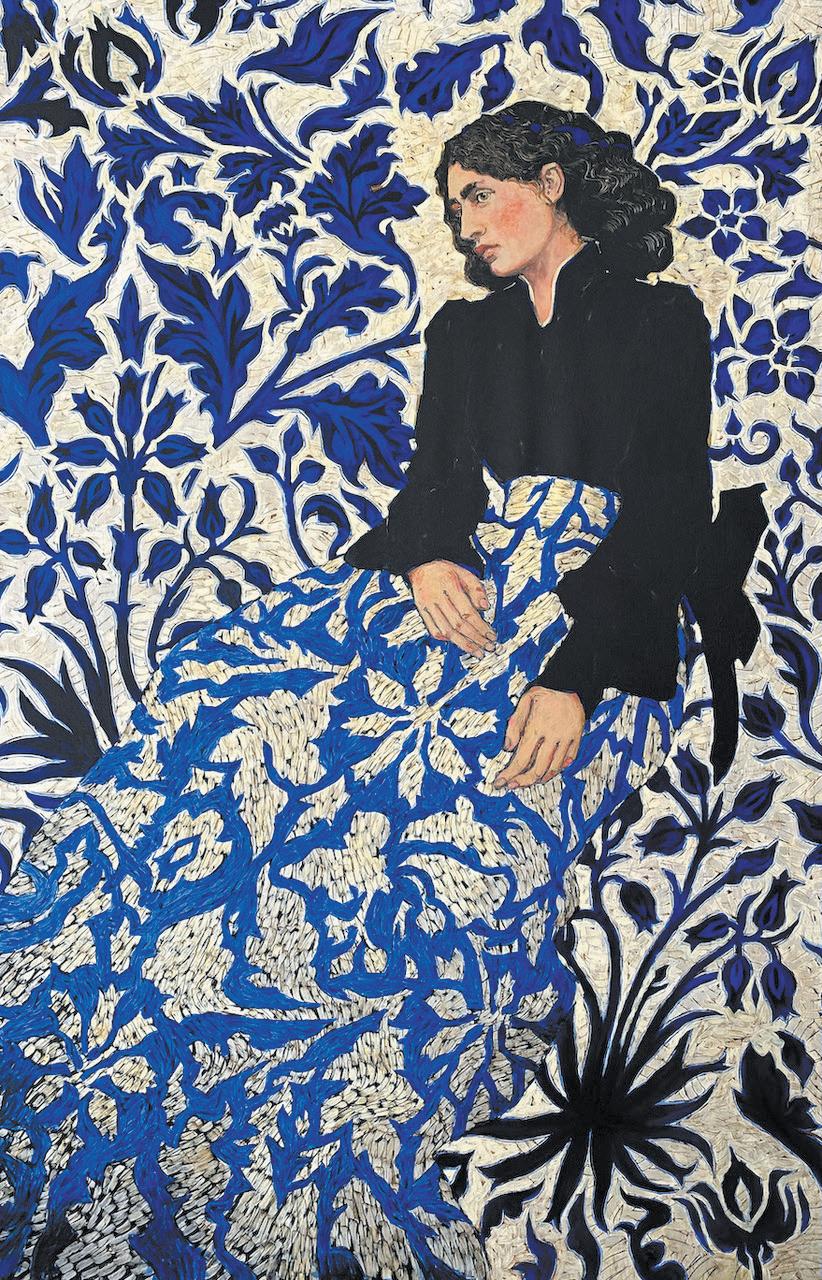
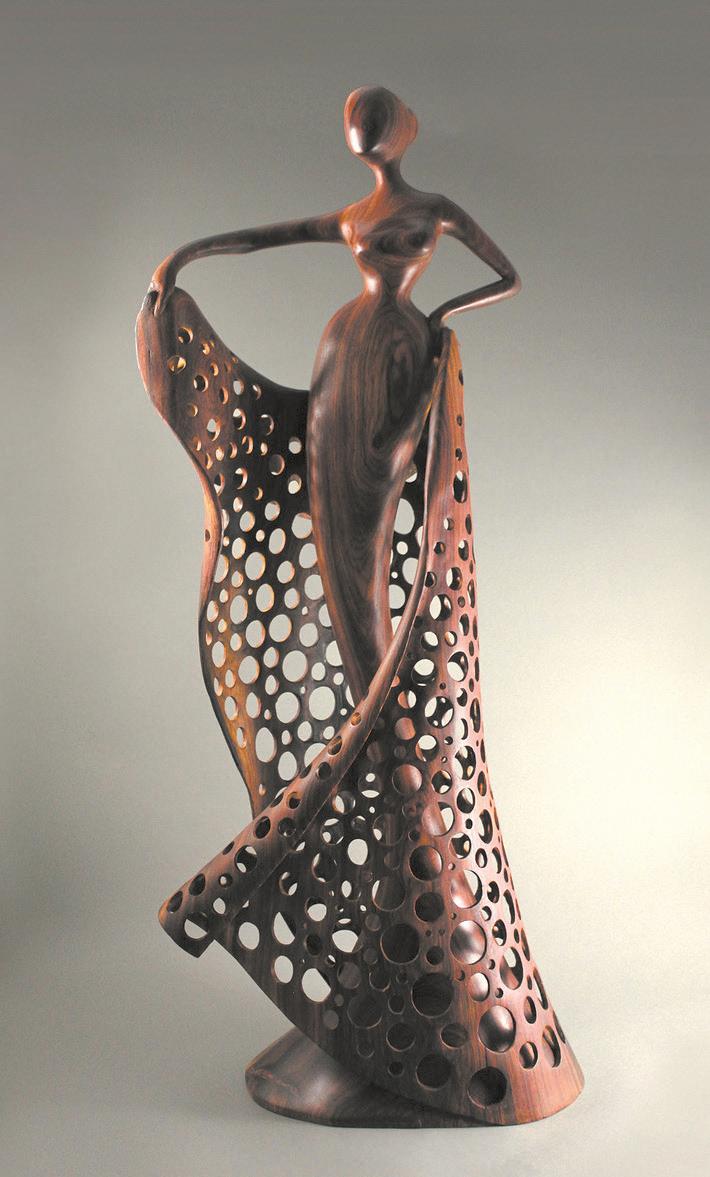


CHRONICLE neighborhood debutantes at
325 N. Larchmont Boulevard, #158 Los Angeles, California 90004 windsorsquare.org
157 N. Larchmont Boulevard
“In the coldest February, as in every other month in every other year, the best thing to hold on to in this world is each other.”
— Linda Ellerbee
Los Angeles Wildfires: We at the WSA hope that you and your loved ones are safe after the devasting fires of January. We offer our deepest condolences to those who have lost so much and gratitude to first responders who battled the flames. Here, in Windsor Square, many in our community generously opened their homes to displaced families or organized donation drives for those affected by the fires.
Lend a Helping Hand: You can still help! There are many ways through local groups, churches and individuals to join in the effort to help those affected by the fires and the recovery of our city. Here are three city- and countyapproved lists of resources to help guide you:
LA Strong: lacity.gov/LAstrong LAHSA: lahsa.org/newsArticle/resources-tosupport-those-during-the-la-fires LA Works: laworks.com/2025fires
Local Public Safety: The WSA encourages continued vigilance and robust home security. The WSA will resume outreach regarding the possible introduction of License Plate Reading (LPR) cameras on streets that choose to participate. The WSA is contributing $1,000 to the first block that moves forward with camera installation. For further information on LPR cameras, contact WSA board member Steve Tator at @tator100@aol.com.
Valentine’s Day, February 14th: Don’t forget to get a little something sweet on Larchmont Boulevard for your sweetheart!
WE NEED BLOCK CAPTAINS! Be the leader of your block and the point person for all that’s going on in the neighborhood. The WSA has numerous block captain positions open. It’s a great opportunity to engage with neighbors and community leaders. Send an e-mail to: blockcaptains@windsorsquare.org.
The Windsor Square Association, an all-volunteer group of residents from 1100 households between Beverly and Wilshire and Van Ness and Arden, works to preserve and enhance our beautiful neighborhood.
325 N. Larchmont Blvd., #158, Los Angeles, CA 90004, or windsorsquare.org.
By John Welborne
Las Madrinas honored 26 young women and their families for their service to the Southern California community and Children’s Hospital Los Angeles during the Las Madrinas Ball at the Beverly Hilton Hotel on Dec. 21.
Sheridan Russell Link, president of Las Madrinas, formally welcomed the families and guests in attendance and thanked everyone for joining Las Madrinas in its support of the research programs at Children’s Hospital. She spoke of Las Madrinas’ positive impact on the hospital for the past 91 years, specifically highlighting the organization’s latest commitment to the Las Madrinas Endowment and Chair in Developmental-Behavioral
‘Sheroes’ to be spotlighted
Hidden stories of Los Angeles’ remarkable women will be showcased at the second annual The Ebell Institute (TEI) Study of Women’s History symposium on Thurs., March 27, from 10 a.m. to 5 p.m. at The Ebell of Los Angeles, 741 S. Lucerne Blvd.
Untold stories of “sheroes” will include women who helped build the city as well as modern scholars and artists.
“We are extremely excited for our second symposium and continuing to develop a broader understanding of the critical role women have played in shaping Los Angeles as we know it,” said Sika Lonner, development manager.
Deadline to submit an entry to be a panelist at the symposium is Fri., Feb. 21. Selected participants will receive a $300 honorarium.
The March 27 event is free. For detailed instructions to submit an entry and more information, write to sika@ ebellofla.org.
Interior designer Timothy Corrigan will discuss his new book at The Ebell of Los Angeles on Thurs., Jan. 23, at 7 p.m. Corrigan will share insights from his career, his design philosophy and the inspiration behind his globally influenced interiors.
The evening will showcase elements of his recent design work, two of his French homes — a Belle Époque apartment in Paris’ 16th arrondissement and a countryside château — and his latest book, “At Home In France.” The text is by former ELLE Decor editor-in-chief Michael Boodro.
Get tickets at ebellofla.org.
Pediatrics.
This year’s Ball chair was Hilary Esketh Crahan, of Windsor Square. Larchmont Village Florist created the centerpieces and floral décor.

The Wayne Foster Orchestra accompanied the Presentation of the Debutantes and played the traditional waltz that transitioned the party from presentation to celebration.
Hello fellow Larchmont Village residents! This is first of what we hope will be a regular series of columns updating you about what’s going on in the neighborhood, as well as a forum to communicate directly about urgent issues we’re dealing with that will affect your lives.
I’m Charles D’Atri, the President of the Larchmont Village Neighborhood Association. I’ve been a member since I moved to Larchmont in late 1998 and an officer for nearly that long. The LVNA, which is nearly 40 years old, is unique in the sense that it is not a homeowner only group; we include residents of all types. Our borders run from Wilton Place to the west side of Arden Boulevard, Melrose Avenue to Beverly Boulevard.
As an historic and eclectic neighborhood with a variety of types of housing & zoning plus commercial corridors on Melrose and Larchmont, we deal with most of the issues (development, upzoning, quality of life, crime) that have become hot buttons across the city, and we act as a resource for residents of our area.
We have the good fortune to have informed, committed neighbors as officers and members who have a great deal of knowledge about the issues that affect us. I encourage you to reach out so we can be a resource to help you or to refer you when you have a problem. Our officers include Charles D’Atri as President, Vince Cox as Vice President, Karen Gilman as Secretary (and Land Use Expert) and Treasurer Sandy Fleck. Housing
We are well aware of the need for housing in Los Angeles and have long played our part with hundreds of multifamily units being built over the last decade+. We recognize the need for, and support development of, multifamily housing in our R3 areas. We’ve worked with a long list of developers to try to ensure that what’s built is supportive of the character of our neighborhood. Additionally, for 15+ years, we have been focused on the potential (and now-happening) redevelopment of North Larchmont Boulevard, one of the areas of the neighborhood that features buildings that are substantially smaller than what the existing zoning allowed even before recent changes. It’s important that you know the characteristics we’ve long identified as being critical to the fabric and viability of North Larchmont — walkable streets with neighborhood friendly commercial first floor uses and live/work buildings (including some reasonable amount of parking) that build on, rather than just exploit, the strengths of the surrounding area and that show sensitivity and offer mitigations for the inevitable negative impacts of construction.
With the recent liberalization and encouragement of even greater density by the state and city, there has been an explosion of development, both proposed and anticipated. Unfortunately, in addition to neighborhood friendly, aware builders who take the time to walk our streets and create buildings we can all be proud of, we now — as the area has become more desirable and the impediments to building lessened — are encountering rapacious developers with little sensitivity for the neighborhood’s existing balance. Such developers have become something of a plague on our area. It would be great if every project were sincere in its commitment to affordable housing and buildings that enrich and build upon a successful, future-looking model. That hasn’t been our experience.
WE NEED YOUR HELP AND SUPPORT. Join the neighborhood association; sign-up for our email list; write to city officials; and turn up for city meetings and hearings when asked. If it interests you, participate in our Board. Also, install the MyLA311 app — the most effective way to report issues to the city.
You can join or reach out to the Larchmont Village Neighborhood Association at lvna.info. You can write to the LVNA at: Larchmont Village Neighborhood Association
325 North Larchmont, #294
Los Angeles, CA 90004
You can email the general LVNA box at lvna90004@gmail. com or email me directly at lvgwnc@gmail.com.
Serving the Larchmont community between Beverly and Melrose, Arden to Wilton Place lvna.info • lvna90004@gmail.com
There have been times, when writing this column, that I have felt more like a war correspondent than a theater critic: covering theater during the pandemic, or the invasion of Ukraine, or the Black Lives Matter protests, the #MeToo movement, last year’s rains and floods, or two presidential campaigns. This month’s column is yet another report from the front.
As a result of the recent fires, already struggling theaters have announced closures or, optimistically, postponements of plays. Artists have lost homes or had to evacuate; rehearsal and performance spaces have burnt down; people died. Homeowners who have lost everything will not be responsive to box office workers selling subscriptions. Donors who might be coaxed back to the arts now have more pressing causes to support.
The burnout is as much spiritual and psychological as it is physical and topographical.
Because a monthly column allows for a bit of perspective, bear with me:
In 1613, Shakespeare’s Globe burned down when a cannon shot, used for a special effect in “Henry VIII,” set fire to the theater’s thatch roof. The theater was rebuilt a year later, but was closed by the Puritans in 1644, and it was torn down during the inter-regnum of Oliver Cromwell. Charles II restored the monarchy in 1660, and he brought back from his French exile a taste for indoor
theaters, proscenium stages, and actresses, none of which were part of the “cruder” theater of Shakespeare’s day.
However, in 1665 London was decimated by plague, and the theaters were shut down.
The same year England suffered an extreme weather event with a cold, wet winter followed by a 10-month drought. Water was scarce. Timber was dry.
On Sept. 2, 1666, a maid left the embers glowing in a baker’s oven on Pudding Lane, and by 1 a.m., a third of London was ablaze. Samuel Pepys, the 17th century diarist, wrote: “… all over the Thames… you were almost burned with a shower of firedrops. This is very true; so as houses were burned by these drops and flakes of fire, three or four, nay, five or six houses, one from another… [we] saw the fire grow; and, as it grew darker, appeared more and more, and in corners and upon steeples, and between churches and houses, as far as we could see up the hill of the City, in a most horrid malicious bloody flame, not like the fine flame of an ordinary fire: it made me weep to see it.”
Nearly 200,000 Londoners spent the next few months living in tents and open fields. More than 13,000 houses were destroyed, along with 87 churches and St. Paul’s Cathedral. The city burned for nearly five days. But within a month the King and his special commission had approved architect Christopher Wren’s plan for a new city and the re-
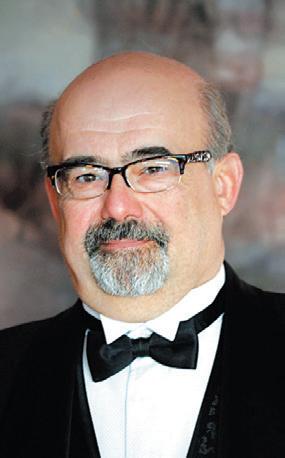
building of St. Paul’s.
New London would have wider streets, with houses farther apart, made from brick or stone, not timber, pitch and thatch. There would be downspouts and gutters, and
something called “insurance” to pay for a fire brigade.
And there would be a revival in the theater. Dryden, Congreve, Wycherly and others would write plays (mostly comedies) for an audience hungry to be entertained. Theaters were expanded. Going out was once again fashionable, expensive, and, most of all, important. Plays came to reflect the wit and resilience of the city and its people.
And London was not alone.
After the Great Chicago Fire of 1871, city leaders built a
massive new opera house. A month after the 1906 San Francisco earthquake, the French actress Sarah Bernhardt gave a free performance of Racine’s “Phédre” for more than 5,000 survivors at the Greek Theatre on the UC Berkeley campus.
It is a war, and we have lost the battle. But to paraphrase the Revolutionary War hero John Paul Jones, “We have not yet begun to fight.”
We will create. We will perform. We will applaud. And, yes … we will review!

By Nona Sue Friedman
What’s it like to be a first responder at the Palisades fire?
The Larchmont Chronicle had the opportunity to talk

with Senior Lead Officer (SLO) Danny Chavez of the Los Angeles Police Department (LAPD). He has been called to work the Palisades fire along with many other SLOs.
Chavez says that the LAPD is pulling officers from every part of the city to help with the fire. The officers work 17-hour shifts with one day on and then one day off. The entire force has been moving schedules around to help and accommodate the Los Angeles Fire Department. Chavez hasn’t heard anyone complain.
He recently drove through the burned area for the first time. In his words, “Seeing the lives taken down to ruins is sad, very, very sad. Everything is gone. In person, it’s twice as sad as on television.” As he was driving, he said all the houses and garages were burned down, but there was one kid’s swing left hanging on a tree limb. A haunting scene.
While on duty, Chavez
spoke to some of the firefighters from the California Department of Forestry and Fire Protection, known as CAL FIRE. He learned that the CAL FIRE teams work 24-hour shifts. After their shifts, he thought maybe they were put up in a hotel or some kind of accommodations, but no. They sleep in their uniforms, removing their jackets, in their trucks. Then, to decompress, they sit in collapsible chairs. At this particular fire, they are able to sit on the beach. “But they are still right at the fire scene, so they are never really off or able to relax,” Chavez related. The most positive aspect of this disaster, in Chavez’s opinion, is the community’s response. According to him, “The community, Los Angeles, has been absolutely supportive of us. No one will be hungry or thirsty or without coffee. It’s such a nice and positive thing to see.”
The Republic of Uzbekistan is a landlocked country in central Asia known for hearty, homey meat dishes. There is a handful of restaurants specializing in Uzbek cuisine in Los Angeles, where the roughly 3,000 Uzbek expats in the Los Angeles area — and others who appreciate comfort food — can indulge in the authentic tastes of the region. The newest such restaurant is Zira Uzbek Kitchen
The restaurant is a family affair. The husband-and-wife team of Azim Rahmatov and Gulnigor “Gigi” Ganieva own the eatery and aim to create an atmosphere reminiscent of the hospitality of their homeland. He studied hospitality management at Cal Poly Pomona and managed a now closed Uzbekistan restaurant and then worked at luxury hotels. She runs their social media account, although her day job is as a cardiologist
at Children’s Hospital Los Angeles. She explains that her husband supported her during her cardiology training and now she is supporting his dream to have his own restaurant. Azim’s brother, Azam Rahmatov, is the chef, having last cooked at an Uzbek restaurant in New Jersey.
Homey atmosphere
The two brothers watched YouTube videos to learn how to build furniture and subsequently made the restaurant’s wood tables and cozy booths cushioned with bold patterned pillows. Tables hold vases of cotton branches in honor of Uzbekistan’s biggest crop. Framed fabrics with mosaic patterns adorn the walls, and colorful ceramics from their home country are tucked into wall cubbies. Tea arrives in beautiful Uzbek teapots with geometrically patterned small bowls for sipping. Pendant lamps have charming, fringed
by Helene Seifer

shades, adding to the homey atmosphere. Servers wear peasant-style striped vests and doppa, an Uzbek embroidered skullcap. Their only misstep is they need better napkins, not thin paper ones in diner napkin dispensers.
Influences
Uzbek cuisine has been influenced by immigrants from other countries in the region. Uzbeks also were introduced to foreign spices and foods when they were the center of the Silk Road trade route (from 130 B.C. to 1453). One spice whose use spread over the Silk Road is cumin, which is used liberally in Uz-
By Suzan Filipek
Descanso was set to celebrate its entrance into the neighborhood with a grand opening Thurs., Jan. 23, at its flagship Los Angeles location at 5773 Wilshire Blvd.
At the Chronicle’s presstime, a ribbon-cutting ceremony was scheduled to kick off the opening of the contemporary taqueria that blends traditional Mexican cuisine with modern influences.
A reception with live music was to follow at the
9,000-square-foot restaurant in the SAG-AFTRA Plaza. It’s in the former home of Callender’s Grill, which closed in 2018 after 40 years.
The new restaurant celebrates the artistry of Mexican cuisine, “where every dish tells a story,” Rob Arellano, founder and co-owner of Descansco, said in a release.
The restaurant features a massive, round central bar, a main dining room and openair patios. In addition, there is a room where multicourse meals are made to order at a
Firecrackers will sizzle and pop at the 47th annual run / walk in Los Angeles Chinatown, Sat., Feb. 1, and Sun., Feb. 2, at the Central Plaza, 943 N. Broadway. In what may be the oldest and longest-running event in the country to commemorate the Lunar New Year, the opening ceremony will feature lion dancers and lighting of 100,000 firecrackers. A 50-mile and a 20-mile bike ride and a PAW’er dog walk also take place Feb. 1. The 5K, 10K and kiddie run are scheduled for Feb. 2.
A beer garden, vendors and
children’s activities will be included in the two-day event. Visit firecracker10k.org.
Malaysian treats
Closer to home, Malaysian chef and caterer Samantha Tan, of Wilshire Park, is taking orders for made-fromscratch Lunar New Year foods through Wed., Feb. 12. Her menu includes a Chinese New Year (prosperity toss) Salad with plum sauce dressing, spicy curry puffs, meat and vegetarian dishes and desserts. Visit samtanskitchen. com and on Instagram @samtanskitchen.
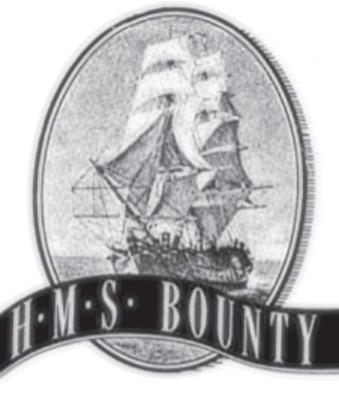
communal table. Private dining is also available.
Menu highlights include a seafood tower, lobster enchiladas and tacos of steak, al pastor, chicken and more.
A portion of the sales from the grand opening will be shared with the California Community Foundation Wildfire Recovery Fund.
To see the brunch, lunch and dinner menus and more information, visit descansorestaurantsla.com.
bek cooking. In fact, the word “zira” in the restaurant’s name means “cumin.”
We started with a $3.50 pot of very flavorful black tea (they are awaiting their liquor license for beer and wine), a plate of $14.99 pickles (two treatments of cabbage, cucumber pickles and half sour green tomatoes) and some terrific Uzbek bread. $6 brings a large round loaf resembling a turban, served warm with red pepper cream cheese. A lovely way to start.
Salads feature eggplant, beef and kurt (an Uzbek cheese), $6.99 to $15.99, and there are $6 samsas (stuffed pastries), but we went right for the manti (steamed dumplings). They offer both steak and pumpkin versions and we ordered the pumpkin, $18. Five four-inch, thickskinned, pleated manti were stuffed with grated pumpkin and onions and served with yogurt sauce. I imagined it would resemble sweet pumpkin tortellini, but these were savory and oniony. My husband loved them, but I think I would have preferred the meat version.
A popular Uzbek dish is lagman, hand-pulled noodles with meat, either as a platter, $19, or in a beef soup, $15.99. My husband and I went on a chilly night, so we split the soup version. The cumin-scented beef broth was filled with a tangle of chewy, wonderfully satisfying noodles, chunks of beef, onions
and loads of multicolored peppers. It was warming and delicious and similar to a good beef stew, only brothy, not thickened. It tasted like home, even though my home never had a soup like this. Chicken shashlik, $16, came with one juicy, well-seasoned skewer, a small green salad and potatoes or rice. We selected rice. This is a tasty, well-priced dish. We also tried $19 plov — rice with garlic, carrots, chickpeas and beef — which was a little under-seasoned.
Desserts are $7.50 apiece, and we ordered a slice of honey cake, which they had just added to the menu. Delicious honey-infused cake was layered with honey cream. It was just sweet enough to perfectly accompany our last sips of tea.
The food at Zira Uzbek Kitchen is meant to evoke memories of home kitchens. The food is not delicate or overly complicated. They are not attempting to turn Uzbek dishes into a Michelin-star experience, nor are they adhering to the California penchant for local, veggie-centric cooking, although Gigi, as a cardiologist, insists they cook with less oil than is traditionally used in Uzbekistan, and they do offer some vegetarian options. This is honest, affordable, tasty food in a charming space reflective of Uzbek culture. And I applaud that.
Zira Uzbek Kitchen, 7422 Melrose Ave., 213-332-4086.


Valentine’s celebrations, weddings, showers and all types of events.
and areas for


A Complete Unknown (9/10): 141 minutes. R. This movie makes a good effort at explaining Bob Dylan’s puzzling fame and influence. But to start off, it’s directed by James Mangold (script by Mangold, Jay Cocks and Elijah Wald), who also directed “Walk the Line” (2005), the biopic about Johnny Cash. There, Mangold made the decision to eschew using Cash’s iconic voice for a horrible impression by Joaquin Phoenix, who is no singer and whose interpretation of Cash’s voice went a long way toward diminishing the movie for me.
Mangold does it again here, having star Timothée Chalamet sing Dylan’s songs himself. This was a surprisingly good decision this time, because Chalamet has a much better voice than Dylan. Mangold also avoided using Joan Baez’s gorgeous voice and allowed Monica Barbaro to use
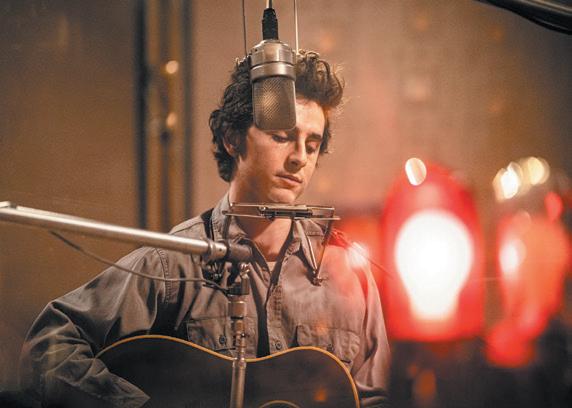
her own voice. That wasn’t so bad, either, as Barbaro has a beautiful voice.
The film tells the first four years of Dylan’s career, 19611965, ending with the climactic moment at the Newport Folk Festival in which Dylan used an electric guitar to the dismay of the promoters, including Pete Seeger (Edward Norton) and the audience. This, presumably, marked the beginning of the transition of music from beautiful melodies and clever lyrics, to be superseded by the jarring loudness of the electric
guitar and banal lyrics.
Chalamet gives a stunning, Oscar-quality performance, capturing Dylan’s selfish, abusive personality perfectly. Joining him are wonderful performances by Barbaro and Elle Fanning (whose performance is also Oscar-quality) as Sylvie Russo. Russo is a substitute name for the late Suze Rotolo, whose name was not used in the film at Dylan’s request. Rotolo was the woman Dylan eventually married after the relationship with Baez ended. The movie is unfortunately vague on these two relationships.
This is a highly entertaining movie filled with music.
Diane Warren: Relentless (9/10): 91 minutes. NR. This is a fascinating documentary about someone who came from nowhere to become a songwriter for more than 450 artists with a catalogue valued at more than a half billion dollars. Directed by Bess
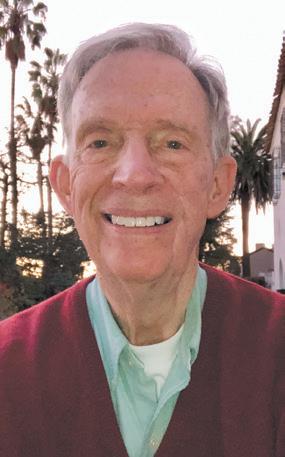
Kargman, the story is told by Diane herself and a myriad of artists and friends, including Cher, Common, Gloria Estefan, Jerry Bruckheimer, Clive Davis, Quincy Jones and a host of others.
Diane says of her childhood, “I got arrested. I was sent to juvenile hall for a couple of weeks. I think they thought they were saving me, but it was kind of a traumatic thing when you are a kid.
“I wanted a 12-string. My dad said, ‘If you get nothing lower than a B I’ll get it for you.’ I did that, and after I got my guitar, I went back to getting nothing but Ds and Fs.”

Reminiscent of John Lennon, whose mother told him, “Playing the guitar is fine, John, but you’ll never make any money at it,” Diane’s mother told her father, “She can’t make a living at it.”
Diane says, “I love it when people tell me I can’t do something.” Her dad took her for guitar lessons, but she didn’t want to learn the scales, so the teacher told her father, “Don’t bring Diane back. She has no future in music.” So, she taught herself.
“Rhythm of the Night” was her first hit when she was 29. She signed with Jack White and wanted to get out of the contract. Jack White says, “I gave up and we made a deal. But it is true that without me there would be no Diane Warren.”
Diane says, “I started my own company, settled the lawsuit and I never looked back. I’ve owned all my own songs since then.”
Cher fought not to record “If I Could Turn Back Time.” “I hated it,” says Cher. But Diane said she’d pay for the track and wouldn’t give up. Cher says that Diane is so cheap that if she were going to pay for the track, she’d sing it. “The minute I started the track,” says Cher, “it was perfect. I did it in about 15 minutes. Diane is unrelenting; but it’s one of my favorite songs, one of my biggest hits.”
Diane says, “You just need one believer, and that one believer has to start out being you.”
Clive Davis: “She knows the power of love. She knows the heartbreak of love. She knows all the emotional qualities surrounding it. But it’s fantasy. Because to my knowledge, she’s never really been in love.”
Diane says, “I’m straight. Everyone thinks I’m gay. But it doesn’t matter. I don’t want to be in a relationship. I don’t think you have to be in love to write a great love song. To me it’s like method acting. When I’m writing these songs, I’m the character. I feel everything.”
She sums up, “I write great songs, and I work my ass off for it.”
Near the end, she gives probably the best Oscar acceptance speech ever. The film closes with a full performance of her song “Dear Me” — a letter to herself.
(Continued from Page 9)
nese New Year Salad with plum sauce dressing known as Prosperity Toss, spicy curry puffs, meat and vegetarian dishes and desserts including a Malaysian take on a Basque cheesecake. Visit samtanskitchen.com or @ samtanskitchen on Instagram.

By Nona Sue Friedman
Thieves of the night are making neighborhoods dark, again. The Larchmont Chronicle has heard from two different areas whose neighborhoods are dark because of copper wire theft.
Larchmont Village
The streets of Irving Boulevard and Norton Avenue between Beverly Boulevard and Melrose Avenue have been “black” since before Christmas, according to Cathy Gellert, resident of
Irving. The lights on Clinton Avenue from Bronson Avenue to Larchmont Boulevard also are not working.
Gellert, a block captain for her block of Irving, has reached out to and responded to neighbors concerned about sudden outages as a result of thieves ripping copper wire from the junction boxes in the ground and on streetlights. Many reports have been made to the city’s 311 number, she tells us.
Unfortunately, the dark




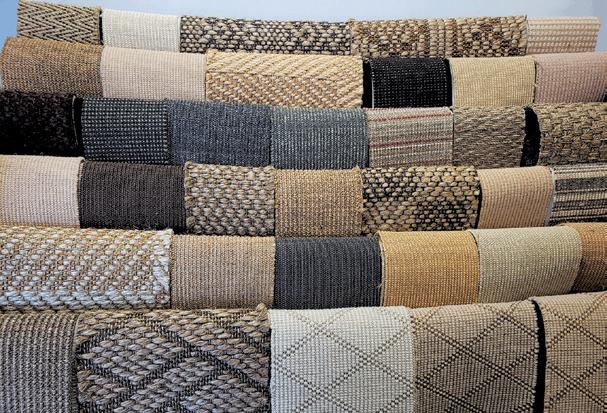

streets have created more crime in the area. As Gellert says, “When there isn’t any light on the streets, it’s just an opportunity [to commit crimes].” She told the Chronicle that, in the last couple of weeks, one car was broken into, and a catalytic converter was stolen from another car.
Gellert reached out to her council district, CD13, and to the City of Los Angeles. As this issue was going to press, she had not heard back. “This all happened before the fires, and it’s concerning that I haven’t heard anything from the city or the council district,” she told us.
Councilmember Hugo Soto-Martínez of CD13 allocated $400,000 in 2024 for overtime repair work by the city’s Bureau of Street Lighting (BSL). The neighbors say they hope the BSL will find its way to this area soon and that the lights will once again shine bright.
Windsor Village
Barbara Pflaumer, president of the Windsor Village Association, told the Larchmont Chronicle that about 10 blocks of Windsor Village have had the copper wire stolen from their streetlights, making them inoperable. She also noted that lights in the area along Olympic Boulevard were out.
Pflaumer contacted Michelle Flores, field deputy for CD5 (headed by Katy Yaroslavsky), and Pflaumer was told, “It’s a citywide problem, and there are delays in fixing the lights.”
Subsequently, on Jan. 15, a Chronicle reporter saw BSL representatives repairing the lights along Olympic, then heading north into the neighboring side streets in Windsor Village. A BSL staff member working on the project said that they hoped to be finished by the end of the weekend (Jan. 19).
At the end of 2024, CD5 Councilmember Yaroslavsky allocated $60,000 of her dis-


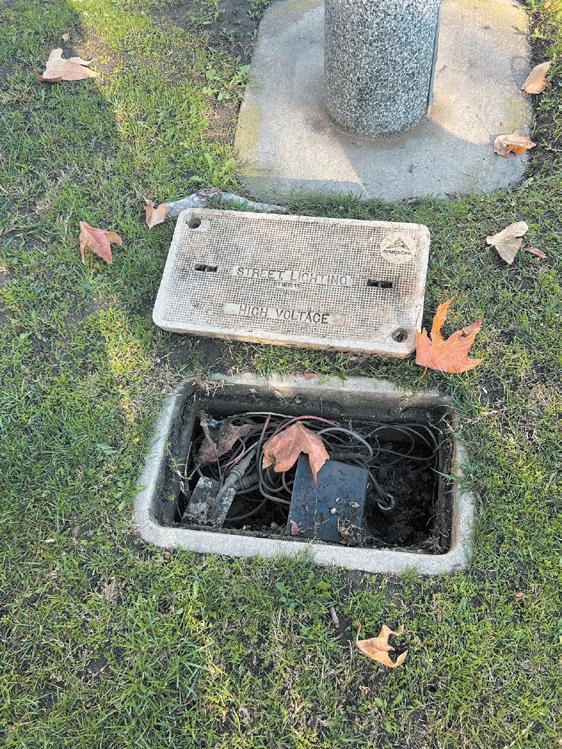
cretionary funds to help repair streetlights. It is unknown if there is a cause and effect relationship to these particular repairs in Windsor Village.
On the day this issue of the Chronicle was going to press, we learned that the streetlights were out on Norton and Van Ness avenues, between Third Street and Beverly Boulevard — again because of wire theft.
Windsor Square


By Nona Sue Friedman
After multiple unsuccessful community meetings with underlings of Councilmember Hugo Soto-Martínez’s Council District 13 office, the residents of St. Andrews Square Neighborhood Association (SASNA), along with neighboring residents of Ridgewood Wilton, met virtually early in January with Soto-Martínez. There were about 35 people on the video conference.
Residents wanted answers to specific questions surrounding an uptick in prostitution on local streets, excessive trash from these nightly trysts and the councilmember’s responses to increased and dangerous traffic. SASNA residents also wanted their streetlights fixed and shining brightly again after months and months of darkness.
Not feeling safe
Soto-Martínez listened empathetically to his constituents, many of whom expressed experiencing feelings of not feeling safe and a poor quality of life.
Vannary So, a resident of Manhattan Place, complained of needles and condoms littering the sidewalks. She said that she and her mom pick up this trash daily around
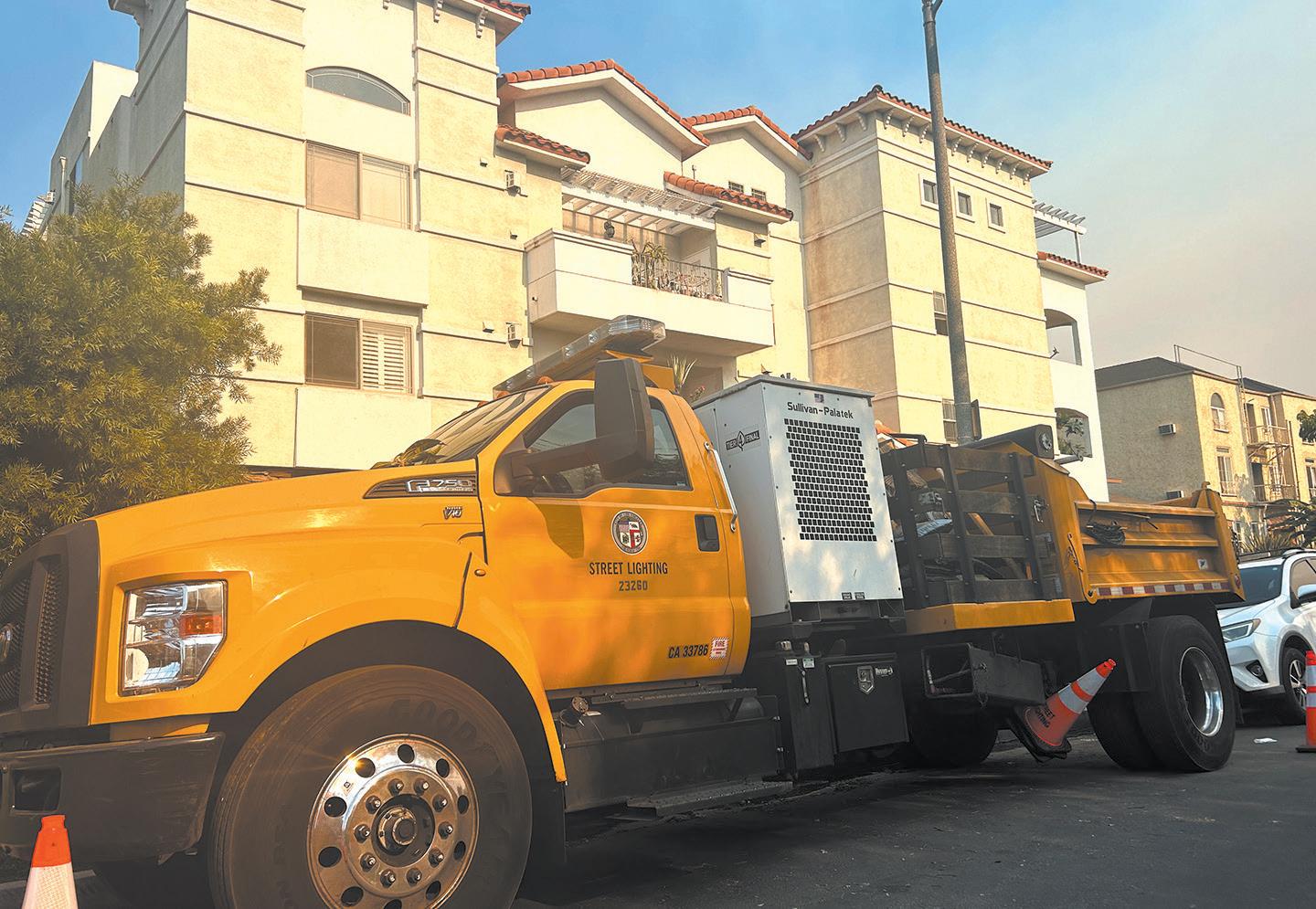
St. Brendan and Charles Kim
Elementary schools.
Tina Kim, another constituent, complained, “It’s like walking through a biohazard wasteland. There are so many needles and condoms.”
Grace Suh, who also lives in the area, was one of many who expressed feeling unsafe both after dark and early in the morning. In her opinion, the increase in prostitution has created a decline in the neighborhood.
Prostitution
Senior Lead Officer Danny Chavez said he wants to be included to hear the needs and wants of the community. “I want to be part of the solution.” He explained that his
department has given multiple citations. Community
leader Loretta Ramos said later that she felt his passion at the meeting and was very glad he was there.
Traffic
Others at the meeting talked of cars circling in the middle of intersections, doing “donuts” near Wilton Place and Third Street as well as speeding down Western Avenue, Wilton Place and the side streets of the neighborhoods at all hours of the night. “Traffic safety is one of the platforms I ran on aggressively. More people died in traffic accidents than homicides in Los Angeles in 2024,” said Soto-Martínez. However,
a solution to these incidents has not yet been presented.
Councilmember and action
“Having the councilman on the call made a huge difference. We finally got some answers and action has been taken. We were able to impress upon him the seriousness of the situation,” said Ramos.
A few days after the meeting, Ramos sent an email to the neighborhood about good news and action from CD13. Soto-Martinez’s office arranged for the Los Angeles Conservation Corps to come to the St. Andrews
(Please turn to Page 14)


SLO Tyler Shuck has been deployed to assist in the fire area and at the Federal Emergency Management Agency relief location. He is unable to provide crime information for his division this month.
OLYMPIC
AGGRAVATED ASSAULTS:
A 26-year-old male entered a multiunit building carrying a rifle and violating an existing restraining order on the 200
(Continued from Page 13) neighborhood once a week for two hours to clean. She also shared that the Bureau of Street Lighting was already fixing the streetlights. As of this writing, SASNA streets are
block of South Manhattan Place on Dec. 29 at 2:30 p.m.
A victim was saving a parking spot in front of an apartment building when a suspect tried to park there and hit the suspect on the 600 block of South Gramercy Place on Jan. 4 at 6:15 p.m.
BURGLARIES: A suspect pried open the rear door of a home on the 600 block of Lorraine Boulevard, taking money and jewelry on Dec. 30
bright once again. Hopefully this will be a deterrent for illegal and illicit overnight activity and start to make people feel safer, said one neighbor.
Residents say they hope these meetings can be scheduled regularly for the coming year.
DIVISION
Furnished by Senior Lead Officer
Tyler Shuck

213-712-3715
40740@lapd.online
Twitter: @lapdwilshire
at 10 p.m.
A suspect broke a back window of a home on the 300
Furnished by Senior Lead Officer
Daniel Chavez

213-793-0709
36304@lapd.online
Instagram: @olympic_slo1
block of South Norton Avenue, ransacked the home, and took property on Jan. 3
at 9 p.m.
RAPE: A woman was raped on the 900 block of South Gramercy Place on Jan. 3 at noon.
THEFT: A package was stolen on Jan. 3 from a multifamily building on the 4700 block of Elmwood Avenue at 1:30 p.m.
GRAND THEFT AUTO: A car was stolen from a parking lot in the 3700 block of West 9th Street on Jan. 3 at 6 p.m.
Registration is open for the Griffith Park Run Half-Marathon and 5K on Sun., Feb. 2, at 4730 Crystal Springs Dr. The event is open to runners and walkers of all ages and abilities, as well as pets.


Enjoy the scenic trails of Griffith Park while supporting the Los Angeles Parks Foundation and Los Angeles city parks.
The event is the only half-marathon that covers all the main trails in Griffith Park. Participants can enjoy the backdrop of iconic landmarks such as the MerryGo-Round, Travel Town, Los Angeles Zoo and Autry Museum.
The 5K route will be flat, scenic and shaded. Awards will be given to the first male
and female runners at the finish line. All finishers will be awarded medals designed by Los Angeles-based artist Beatriz Mojarro.
Promising a great family day out, the half-marathon will begin at 7:30 a.m. The 5K race starts at 10 a.m. Registration fees include raffle items, a commemorative die-cast medal and a T-shirt. Parking will be located off of Crystal Springs Road. For prices, more information and to register, go to rungpr.com.

If you had to jot down a quick note, what would you reach for? Smartphone handy, would you go for a note-taking app? Or a receipt floating around in your wallet or purse? But who has a pen? Anyone?
If this were Classical Athens, you might reach for a pottery shard. The small, discarded remnants of broken vessels were scratched into by hand as a form of quick, informal note-taking. Known as “ostraka,” from the Proto-Indo-European root “ost-,” meaning “bone,” these writing surfaces were cheap and readily available, making them useful in doodling, scribbling and — with few other options available — cleaning one’s behind after using the bathroom.
Each year, the Athenian populace was given the option to expel a particular citizen from the city-state for a 10-year spell. A vote decided which among them was sentenced to leave, their name etched in ostraka. If the number of ostraka bearing your name reached 6,000, you were thereby banished in this process, which, named for these ballots, came to be known as “ostracism.” Some would further besmirch an exiled enemy by specifically using an ostracon bearing the offender’s name for trips to the toilet.
From about the fourth to the 15th century, parchment — a medium made from the skin of sheep and goats — was the writing material of choice in Europe. Its name arrives from the Late Greek “pergamenon,” meaning “of Pergamon,” adopting the title of the ancient Greek city (today Bergama, Turkey) from which it was thought to have originated.
A similar sheeting made using the skin of a calf was called “vellum,” a descen-


dant of the Old French word for calf, “vel,” from which the word “veal” also arises. Today “vellum” usually refers to a translucent paper named after the animal-derived version for its high quality, though there is still some calf vellum in modern use. In 2017, the House of Lords and House of Commons in the U.K. reached a compromise on a new method for printing the Acts of Parliament which, recorded since 1849 on calfskin, would now live on archival paper, with front and back covers made of traditional calf vellum.
Paper, whose manufacture was first documented in China during the Eastern Han period (25-220 A.D.), eventually became the standard across the globe. The material was named for papyrus, a medium made from thin strips of the plant Cyperus papyrus and used in Egypt at least as far back as the First Dynasty (3100 - 2900 B.C.). The two goods are distinctive, however, in that paper is made by macerating cellulose fibers, which are then suspended in water, pressed and dried. For this reason, many papers are named for the specific plant species used to make them, for example dó paper, made from the inner bark of the dó
Judge Kaddo to be honored Feb. 8
Judge James A. Kaddo, a longtime resident of Larchmont Boulevard in Windsor Square, is being honored by the House of Lebanon (HOL) with a lifetime achievement award. The evening will include dinner and dancing on Sat., Feb. 8, at 6 p.m. at HOL, 4800 Wilshire Blvd.
Kaddo was a driving force in establishing the HOL. He is also the first Lebanese-born American judge to serve in California. Tickets start at $200 and can be purchased at tinyurl.com/7pedu8m7.

Café by Mara Fisher

tree native to Vietnam, and lokta paper, crafted from the fibers of an evergreen shrub known colloquially as “lokta” in Nepal.
The paper typically used for file folders — called “manila” — was once made from fibers of the abacá plant, or Manila hemp, a species of banana endemic to the Philippines. Bristol, a thick drawing medium made by gluing together thin paper layers, is named not for the city in southwest England but after the prolif-
ic 18th-century art collector Frederick Augustus Hervey, Fourth Earl of Bristol. And the roll of sturdy brown paper we call “kraft,” while being useful in all manner of “crafts,” is actually named for the German word meaning “strength.”
But what of the paper before you? With its gray cast and smooth surface, newsprint is, quite literally, your everyday paper. The doorstop mainstay arrived in the 19th century with the development of wood-pulp paper, a significantly cheaper alternative to papers made from cotton fibers, which had been the standard in the U.S. up to that point. The cost to produce paper using wood pulp was so low that the literary community at first derided it as appropriate for only the
basest forms of publication. Indeed, magazines with sensational stories of romance and adventure were printed on the fronts and backs of the cheap, mass-market material — hence the term “pulp fiction.” The democratization of access to paper — scorned by the likes of Samuel Taylor Coleridge, who mourned how books, “[once] religious oracles... [were] degraded into culprits” — coincided with increasing literacy rates and growing urban populations. With this seismic shift in the availability of reading material, we now interpret with ease the musings of great minds, stories from across the globe and the goings-on of a fivesquare-mile neighborhood in central Los Angeles that’s particularly dear to our hearts.
